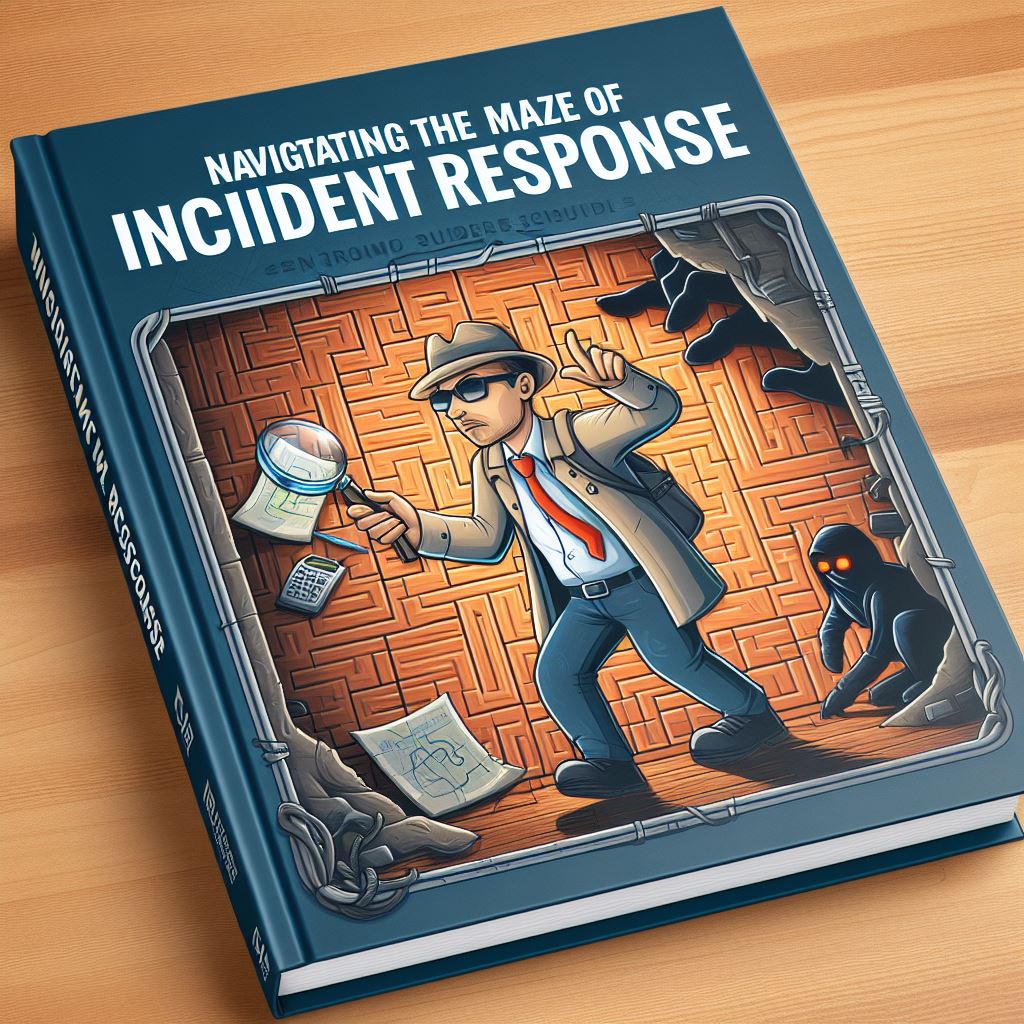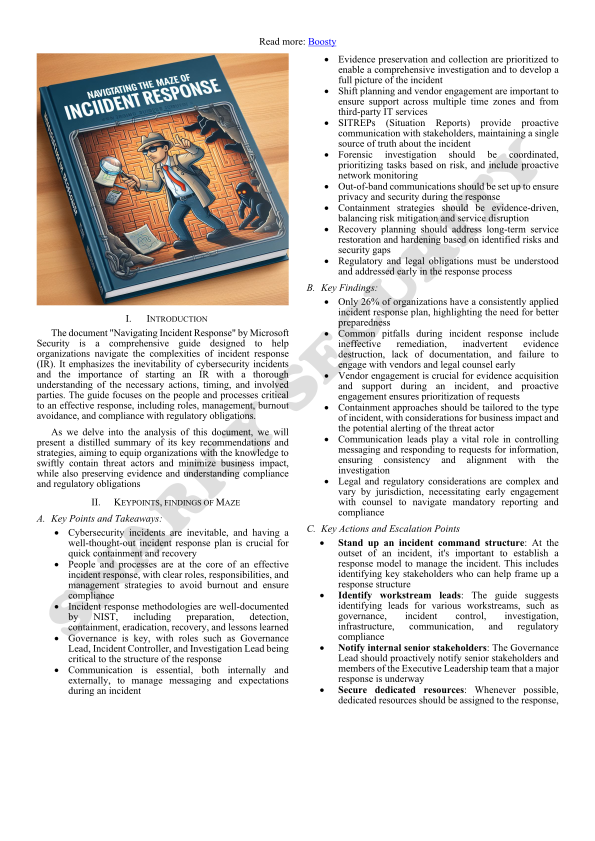«Navigating the Maze of Incident Response» by Microsoft Security

The document titled «Navigating the Maze of Incident Response» by Microsoft Security provides a guide on how to structure an incident response (IR) effectively. It emphasizes the importance of people and processes in responding to a cybersecurity incident.
So, here’s the deal: cyber security incidents are as inevitable as your phone battery dying at the most inconvenient time. And just like you need a plan for when your phone kicks the bucket (buy a power bank, maybe?), you need a plan for when cyber incidents occur. This guide is all about that plan, focusing on the people and processes involved in effectively responding to an incident.
Now, as enterprise networks grow in size and complexity, securing them becomes as challenging as finding a needle in a haystack. The incident response process becomes a maze that security professionals must navigate (and only a quarter of organizations have an incident response plan, and you are not yet one of them).
This guide, developed by the Microsoft Incident Response team, is designed to help you avoid common pitfalls during the outset of a response. It’s not meant to replace comprehensive incident response planning, but rather to serve as a tactical guide to help both security teams and senior stakeholders navigate an incident response investigation.
The guide also outlines the incident response lifecycle, which includes preparation, detection, containment, eradication, recovery, and post-incident activity or lessons learned. It’s like a recipe for disaster management, with each step as crucial as the next.
The guide also emphasizes the importance of governance and the roles of different stakeholders in the incident response process. It’s like a well-oiled machine, with each part playing a crucial role in the overall function.
Here are key points:
❇️Cybersecurity incidents are inevitable: The document starts with the groundbreaking revelation that cybersecurity incidents are, in fact, inevitable. Who would have thought? It’s almost as if we live in a world where cyber threats are a daily occurrence
❇️Only 26% of organizations have a consistently applied IR plan: The document cites an IBM study that found only 26% of organizations have an incident response plan that is consistently applied. It’s comforting to know that nearly three-quarters of organizations are have decided to effectively save their resources and money
❇️The importance of people-centric incident response: The document emphasizes the importance of a people-centric approach to incident response. It’s not just about the technology, but also about the people who use it. It’s a good thing we have this guide to remind us that people are involved in processes and that there will always be something to keep people busy and the HR department to find new people for new involvement
❇️The need for clear roles and responsibilities: The document stresses the importance of clear roles and responsibilities in an incident response. It’s almost as if people work better when they know what they’re supposed to be doing, and yet management still believes that employees can guess everything, but Microsoft politely reminds the truisms.
❇️The incident response maze: The document likens the incident response process to navigating a maze. Because nothing says «efficient process» like a structure designed to confuse and misdirect (The sales department has already received an award for IR leadership, hasn’t you?)
❇️The importance of preserving evidence: The document highlights the importance of preserving evidence after a breach. It’s a good thing they mentioned it, otherwise, we might have just thrown all that valuable data away
❇️The need for a response model: The document suggests that organizations should define a response model to manage the incident. It’s almost as if having a plan is better than not having one (get busy already).
❇️The need for dedicated resources: The document suggests that organizations should secure dedicated resources for incident response. Because apparently, asking your IT team to handle a major cybersecurity incident in their spare time is not going to work as an approach anymore.
❇️The importance of communication: The document emphasizes the importance of communication during a cybersecurity incident. Because it’s not like people need to be kept informed during a crisis or anything (but if they wanted to, they would have guessed it themselves).
So, how can organizations ensure their incident response plan is flexible enough to adapt to changing circumstances? Well, it’s like trying to predict the weather — you can’t control it, but you can prepare for it.
❇️Regularly review and update the plan: Threat landscapes change faster than fashion trends. Regular reviews and updates can help ensure the plan stays relevant and you become more confident
❇️Test the plan: Regular testing can help identify gaps and areas for improvement. It’s like rehearsing for a play — you want to know your lines before the curtain goes up (and you’ll have to justify everything, so why not immediately come up with answers for all occasions)
❇️Involve all relevant stakeholders: From IT to legal to PR, everyone needs to know their role in the plan. It’s like a football team — everyone needs to know the play to score a touchdown (no one will get away with overtime work).
Preserving evidence while responding to an incident seems to be absolutely important, otherwise why would you buy so many disks in a RAID0 solution (and wipe your anime from there).
❇️Inadvertent evidence destruction: In the rush to remediate, organizations often destroy evidence. It’s like washing the dishes before the food critic has a chance to taste the soup
❇️Lack of forensic expertise: Preserving digital evidence requires specialized knowledge and skills. Without them, evidence can be easily overlooked or mishandled (now it’s obvious why RAID1 exists)
❇️Failure to consider legal requirements: Depending on the nature of the incident, there may be legal requirements for evidence preservation. Ignoring these can lead to penalties and undermine any legal proceedings (Microsoft has even pre-built hash functions in their terminal)
So, there you have it. A snarky Microsoft’s guide to navigating the maze of incident response. It’s a wild, complex, and often frustrating world, but with the right plan and people, you can navigate it like a pro.
Unpacking in more detail:


